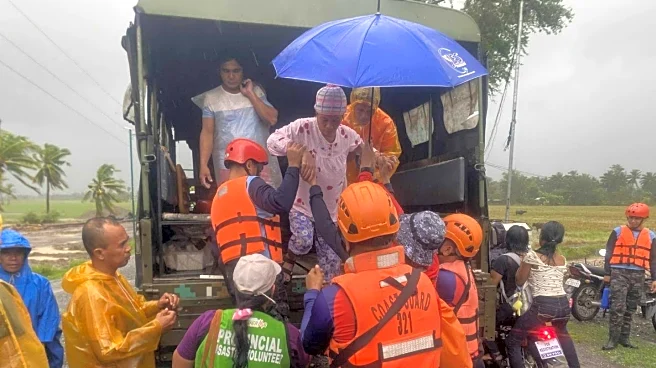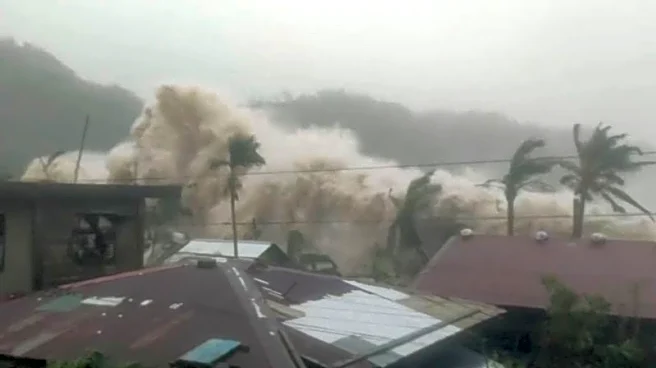What's Happening?
Typhoon Fung-wong, initially classified as a super typhoon, made landfall on the northeastern coast of the Philippines on November 9, 2025. The storm brought maximum sustained winds of 185 kph (115 mph)
and gusts reaching 230 kph (143 mph). As a result, more than a million people were evacuated from the affected areas. The typhoon has left two people dead and displaced millions more. After impacting the Philippines, Fung-wong is now moving over the South China Sea and is expected to head towards Taiwan, where it may weaken further before reaching the Ryukyu Islands as a remnant low or weak tropical depression.
Why It's Important?
The impact of Typhoon Fung-wong highlights the vulnerability of the Philippines to severe weather events, which can lead to significant human and economic losses. The evacuation of over a million people underscores the scale of the threat posed by such natural disasters. The fatalities and displacement of millions emphasize the urgent need for effective disaster preparedness and response strategies in the region. Additionally, the storm's trajectory towards Taiwan and the Ryukyu Islands suggests potential further disruptions, affecting regional stability and necessitating international cooperation in disaster management.
What's Next?
As Typhoon Fung-wong continues its path towards Taiwan, authorities in the region are likely to issue warnings and prepare for potential impacts. The storm's weakening trend may reduce its severity, but precautionary measures will be essential to minimize risks. The international community may offer support to affected areas, focusing on recovery efforts and infrastructure rebuilding. Monitoring the storm's progression will be crucial for timely responses and mitigating further damage.
Beyond the Headlines
The occurrence of Typhoon Fung-wong raises broader questions about climate change and its role in intensifying weather patterns. The increased frequency and severity of such storms could have long-term implications for regional development and environmental policies. Addressing these challenges may require global cooperation and investment in sustainable practices to enhance resilience against future natural disasters.














